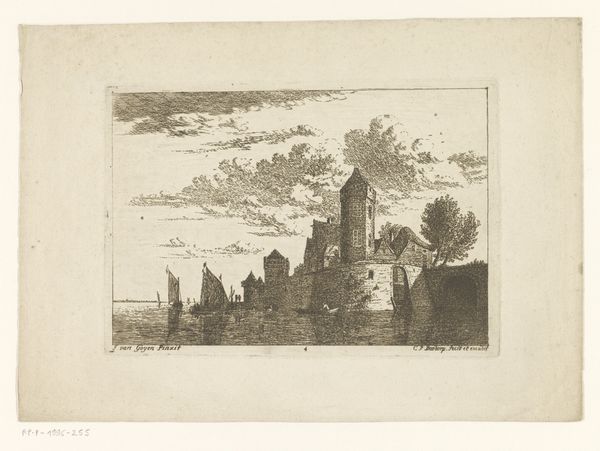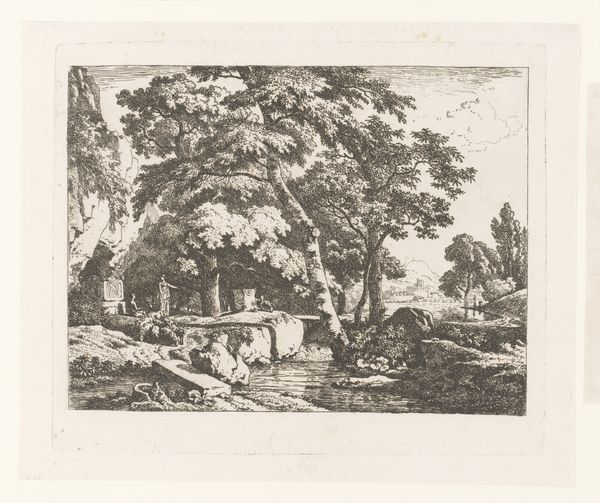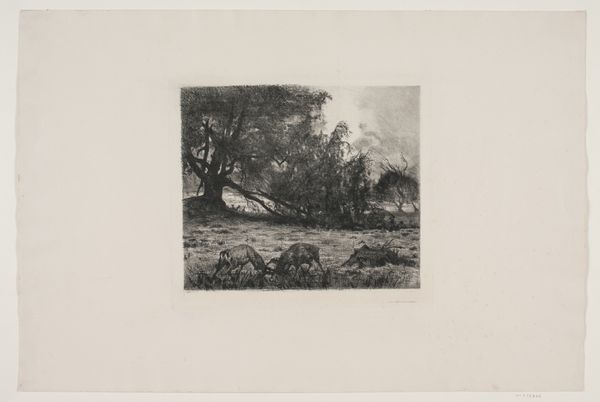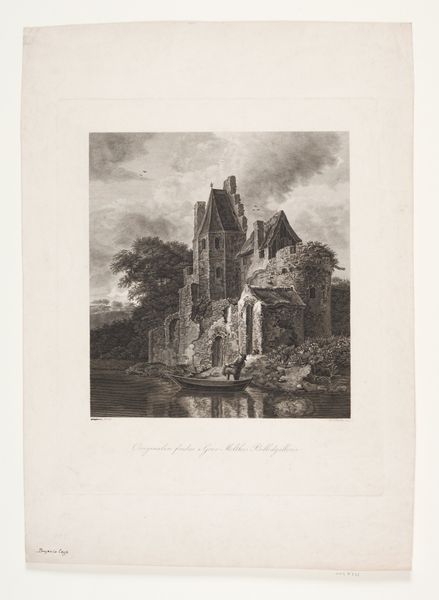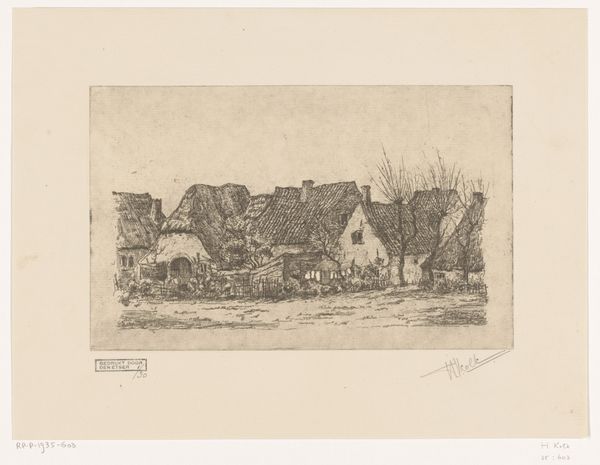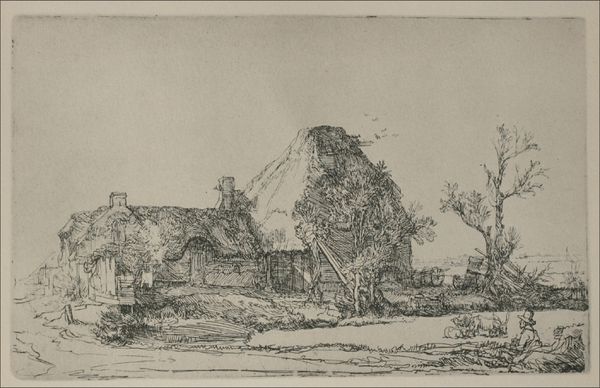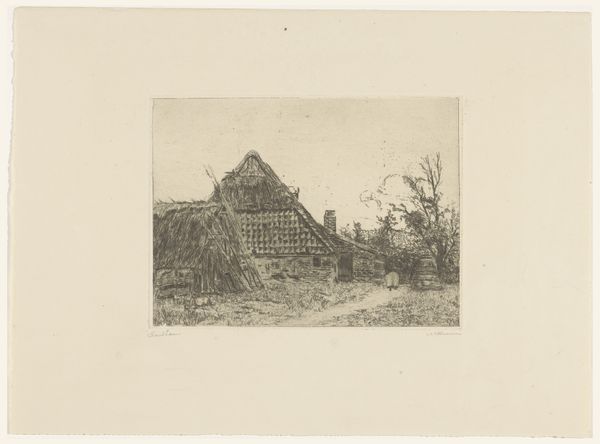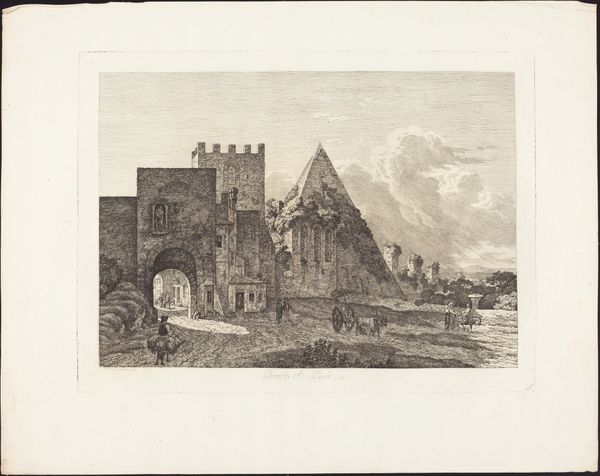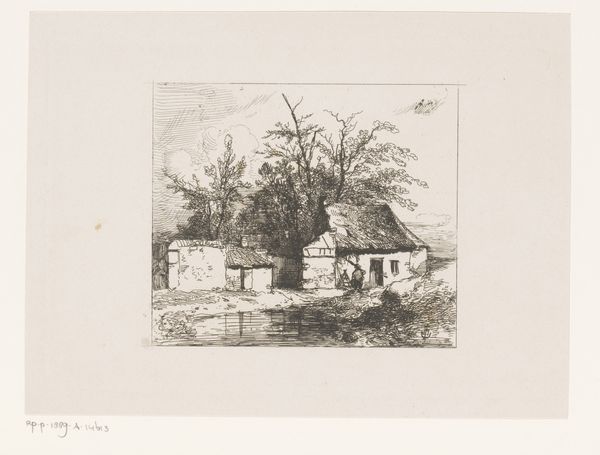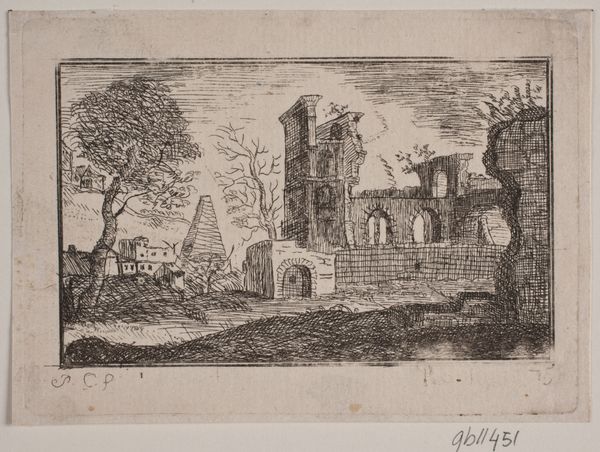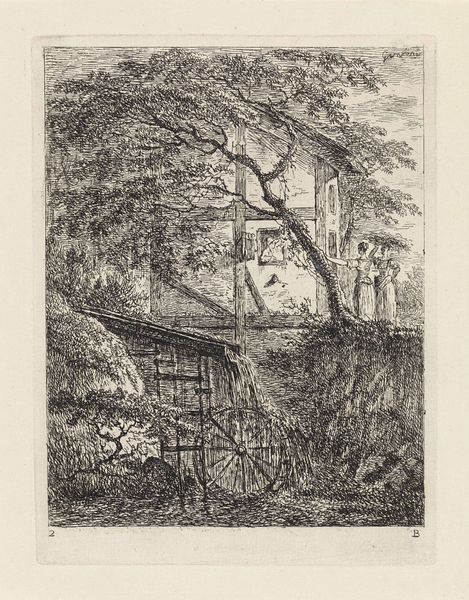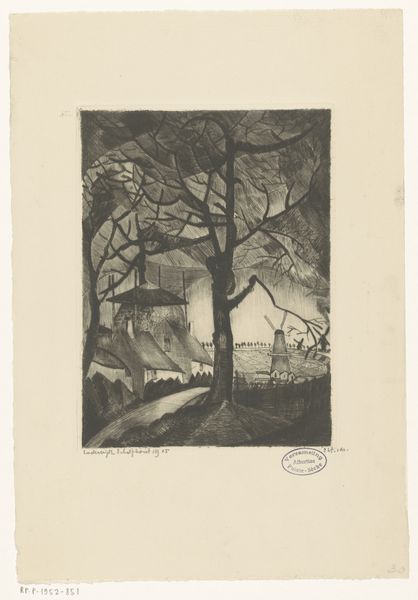
View of the Pyramid of Caius Cestius, with section of the Roman walls to the right and the Porta San Paolo in the distance 1756
0:00
0:00
print, engraving
#
neoclacissism
#
ink painting
# print
#
landscape
#
engraving
Dimensions: 395 mm (height) x 538 mm (width) (plademaal)
Curator: This is Giovanni Battista Piranesi's "View of the Pyramid of Caius Cestius," an engraving dating back to 1756. It's part of the collection here at the SMK. Editor: My immediate reaction is one of romantic decay. The immense pyramid, softened by time, rises majestically but there are visible cracks, signs of nature reclaiming the space. It contrasts vividly with the bustling little figures at its base. Curator: Indeed, Piranesi was known for this juxtaposition. He wasn't just depicting Rome; he was constructing a vision of it, filtered through both classical ideals and a palpable sense of history’s impact. The inclusion of everyday Romans against this monumental structure really emphasizes the changing role of these ancient symbols in public life. Editor: Absolutely. The pyramid itself has potent associations, of course, linking Rome to ancient Egypt, but the way it's presented here feels less about overt power and more about enduring legacy. The broken walls, the creeping vegetation… They whisper of resilience and adaptation. I wonder how a contemporary Roman might view that pyramid as opposed to one living in ancient times. Curator: It’s a really vital question. Piranesi highlights the complex ways ancient symbols morph and gather cultural importance with the rise and fall of empires and societies. The Porta San Paolo in the background, with its own layering of architectural styles over centuries, speaks to the accumulation of cultural narratives. He presents the city and its iconography as an active historical site in continual conversation. Editor: He also infuses this vision with an awareness of human frailty. It makes you wonder about the narratives inscribed onto the walls which appear to point down at these tiny, unaware figures below. Curator: Precisely, and that interplay is precisely what draws me to his prints time and time again. It showcases an epic interplay between symbols of eternal empires and fragile human lives. Editor: It really sparks that humbling recognition of the transient. Seeing the permanence of form next to human ephemerality… it lingers.
Comments
No comments
Be the first to comment and join the conversation on the ultimate creative platform.
